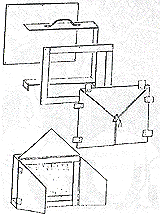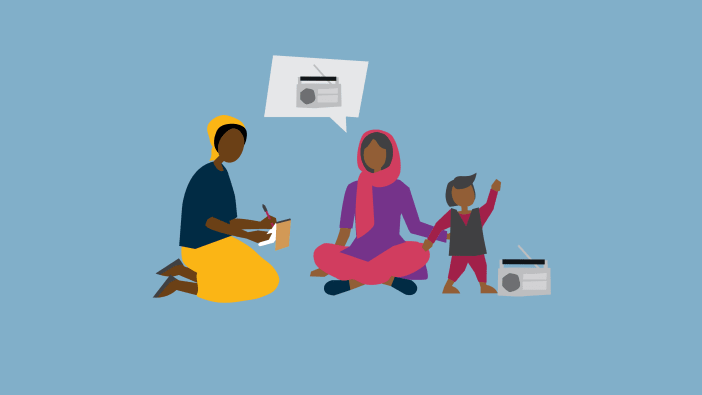Kamishibai is a portable wooden theatre invented and used in Japan about 200 years ago. The word Kamishibai means to provide drama with paper! It is a simple way of telling stories using pictures drawn on cards or sheets of paper, to small groups of people.
The theatre is made from a flat wooden or cardboard box. The front opens out to form a small theatre, with a side opening for putting the pictures in and out. The box does not usually weigh more than 2kg. Local craftsmen should be able to build the theatre. It can be placed on a stand or table in front of the audience. It can also easily be mounted on the front of a bicycle. In Japan it was traditionally used by storytellers who would travel from village to village on their bicycles, entertaining people with stories in return for payment. The small theatre will draw more attention than a display of posters, so it is ideally suited to teaching health and development messages.
The posters or pictures are all placed in the box, in the correct order, before the talk begins. They are drawn out, one after another, during the show, always leaving on view the picture which shows the development of the story. The operator at the same time explains the subject and whenever possible will make the story more lively by changes in his voice. The stand may be covered with a cloth, behind which one or two assistants may hide and create sound effects or add a musical accompaniment.








